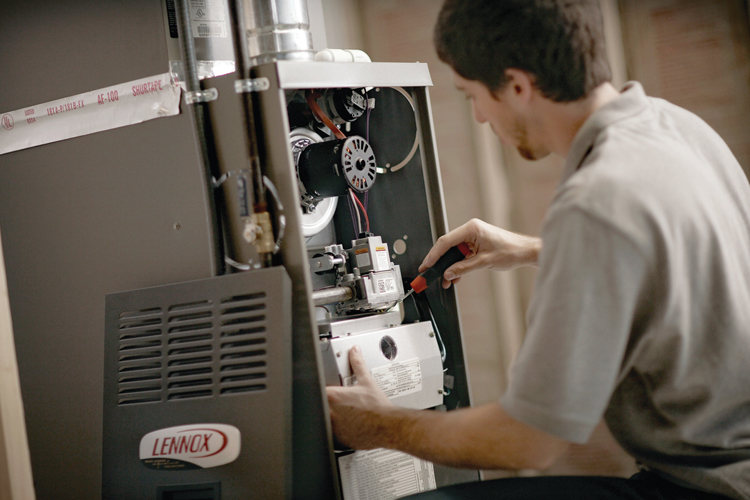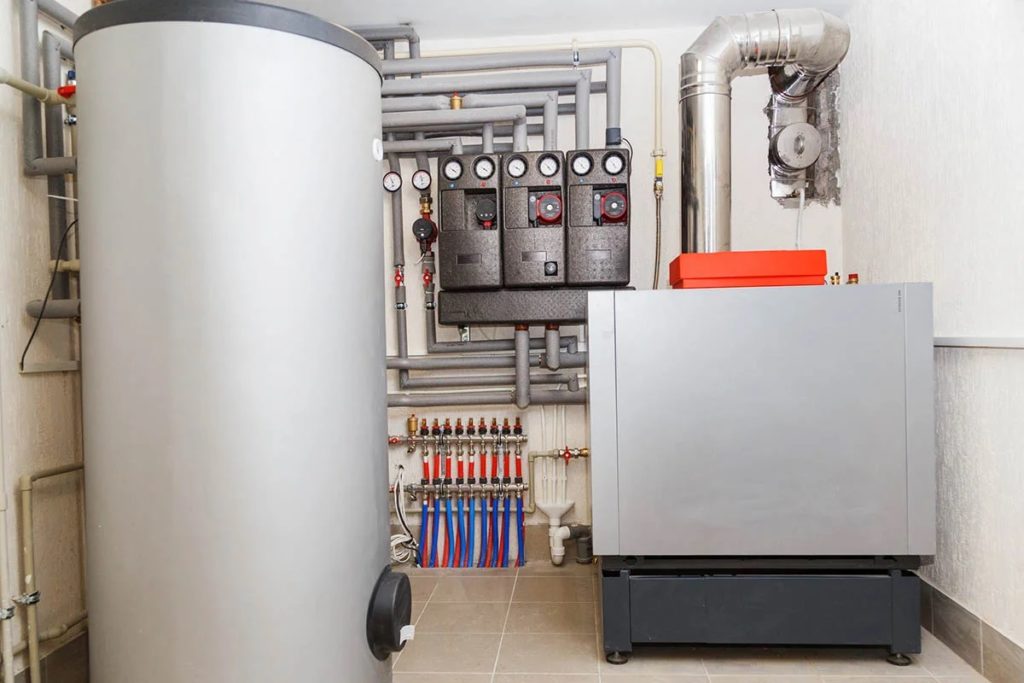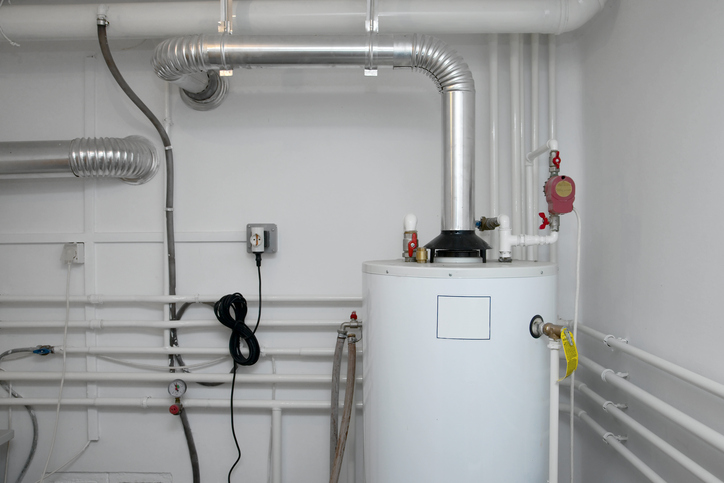As the winter chill sets in and the days grow shorter, an appropriately sized furnace becomes essential to maintaining a comfortable and warm home. Choosing the right size furnace can make a significant difference in your energy bills, comfort levels, and the overall efficiency of your heating system. To help you make an informed decision, we’ve developed this comprehensive furnace size calculator that considers various factors, including your home’s square footage, insulation levels, and climate zone.
The Importance of Furnace Size

The size of a furnace plays a crucial role in its efficiency, effectiveness, and overall performance. Here are several vital aspects highlighting the importance of furnace size:
Heating Capacity:
Furnace size directly correlates with its heating capacity.
A furnace that is properly sized will be able to produce enough heat to keep your house at a optimum temperature throughout the winter.
If the stove is too small, it may struggle to heat the space adequately, leading to discomfort and increased energy consumption.
Energy Efficiency:
An appropriately sized furnace operates more efficiently, as it can meet the heating demands of the space without unnecessary cycling on and off. Oversized furnaces cycle frequently, resulting in energy wastage and increased wear and tear on the system. Conversely, an undersized furnace may run continuously, struggling to reach the desired temperature and consuming more energy than necessary.
Cost Savings:
Proper furnace sizing can contribute to cost savings. An adequately sized furnace operates optimally, using energy more efficiently and reducing utility bills. Investing in the correct size upfront can lead to long-term financial benefits through lower energy consumption and decreased maintenance costs.
Comfort Levels:
Furnace size directly influences the comfort levels within your home. A correctly sized furnace ensures consistent and even heating throughout all areas, preventing cold spots and maintaining a comfortable environment. This is essential for creating a pleasant living space and avoiding temperature fluctuations.
Longevity of the System:
Furnaces that are appropriately sized experience less stress and wear and tear. This can contribute to a longer lifespan for the heating system, reducing the need for frequent repairs and premature replacements. Oversized furnaces, on the other hand, may experience more frequent cycling, leading to increased mechanical strain and a shorter lifespan.
Humidity Control:
The size of a furnace can impact its ability to control indoor humidity levels. Properly sized furnaces help maintain optimal humidity, preventing overly dry or damp air issues. This is important for both the comfort and the well-being of occupants, as arid air can lead to respiratory problems and discomfort.
Factors That Influence Furnace Size

Several factors influence the appropriate size of a furnace for a particular space. It’s crucial not to neglect these factors to ensure optimal performance, energy efficiency, and comfort. Here are key factors that influence furnace size:
Square Footage of the Space:
The size of the area to be heated is a fundamental factor. Larger spaces require furnaces with higher heating capacities, while smaller units can adequately serve smaller spaces.
Insulation Levels:
The insulation quality of a home affects its heat retention. Well-insulated homes may require a smaller furnace as they retain heat more effectively. In contrast, poorly insulated homes might need a giant furnace to compensate for heat loss.
Climate:
The amount of furnace required depends in large part on the local climate. In order to keep indoor temperatures comfortable throughout the winter, colder climates demand greater heating capacity.
Number and Size of Windows:
Windows can contribute to heat loss. Homes with large or poorly insulated windows may require a more giant furnace to compensate for the additional heat loss.
Ceiling Height:
Taller rooms require more energy to heat. The height of the ceilings in a space can influence the size of the furnace needed to maintain a consistent temperature.
Ductwork Efficiency:
The efficiency of the ductwork system is crucial. Leaks, blockages, or inefficient distribution can affect the furnace’s ability to deliver heated air throughout the home, potentially necessitating a larger furnace.
Air Infiltration:
The degree of air infiltration, or how well the home is sealed against drafts, impacts the heating load. A drafty home may require a larger furnace to compensate for the loss of heated air.
Occupancy and Lifestyle:
The number of occupants and their lifestyle habits can influence the heating load. Homes with more people or specific lifestyle choices (such as frequently opening doors and windows) may require a larger furnace.
Heat Loss Calculation:
HVAC specialists frequently use the Manual J calculation to ascertain the heating load of a house. In order to precisely size the furnace for maximum performance, this calculation takes into account a number of factors, including those already mentioned.
Future Expansion Plans:
If plans are to expand or renovate the home, it’s important to consider those factors when sizing the furnace to ensure it can accommodate the increased heating load.
How to Size Furnace in Canada

Sizing a furnace in Canada or anywhere else involves carefully analyzing various factors specific to the home and its location. The process typically includes the following steps:
- Calculate the Total Heat Loss: Perform a Manual J calculation, a standard method used by HVAC professionals to determine a home’s heating load. This calculation considers factors such as the home’s square footage, insulation levels, windows, doors, climate, and more. Many HVAC professionals use specialized software to perform this calculation accurately.
- Consider Climate Conditions: In Canada, where winters can be harsh, it’s crucial to consider the local climate. The heating requirements will be higher in colder regions, and the furnace size should be selected accordingly to ensure it can meet the demands of the climate.
- Evaluate Insulation Levels: Assess the insulation in walls, ceilings, floors, and windows. Well-insulated homes will have lower heat loss, influencing the size of the furnace needed. Ensure that the Manual J calculation accounts for the specific insulation levels in each part of the home.
- Examine Window and Door Characteristics: Consider the size, type, and efficiency of windows and doors. These elements contribute to heat loss, and addressing them in the calculation ensures the furnace is appropriately sized.
- Consider Air Infiltration: Evaluate how well the home is sealed against drafts. Proper sealing helps in reducing heat loss, impacting the heating load. You can measure air leakage and account for it in the calculation by doing a blower door test.
- Assess Ductwork Efficiency: The ductwork system’s efficiency affects the furnace’s overall performance. Leaks or inefficient distribution can lead to energy loss. Ensure that the ductwork is considered in the sizing calculation.
- Factor in Future Plans: If there are plans for home renovations or expansions, factor in these changes when sizing the furnace to accommodate the potential increase in heating load.
- Please consult with a Professional: For precise furnace sizing, speaking with a licensed HVAC specialist is strongly advised. They have the knowledge and resources to carry out the required computations, taking into account all pertinent variables.
- Select an Efficient Furnace: Consider the efficiency rating of the furnace. In Canada, the Annual Fuel Utilization Efficiency (AFUE) rating is commonly used to measure furnace efficiency. A higher AFUE indicates a more efficient furnace.
- Local Codes and Regulations: Any local building codes or regulations that might affect the choice and installation of a furnace should be known about. It is imperative to adhere to these codes for both legal and safety purposes.
Remember that oversizing or undersizing a furnace can lead to inefficiencies, increased energy costs, and reduced comfort. Taking the time to accurately size the stove based on the home’s specific conditions is a crucial step in ensuring optimal performance and energy efficiency.
Furnace Size Calculator

Furnace Size Chart

| Square Footage | Insulation Level | Climate | Recommended Furnace Size |
| Up to 1,000 | Poor | Cold | 40,000 – 60,000 BTU/hr |
| Up to 1,000 | Good | Cold | 30,000 – 40,000 BTU/hr |
| 1,000 – 1,500 | Poor | Cold | 60,000 – 80,000 BTU/hr |
| 1,000 – 1,500 | Good | Cold | 40,000 – 60,000 BTU/hr |
| 1,500 – 2,000 | Poor | Cold | 80,000 – 100,000 BTU/hr |
| 1,500 – 2,000 | Good | Cold | 60,000 – 80,000 BTU/hr |
| 2,000 – 2,500 | Poor | Cold | 100,000 – 120,000 BTU/hr |
What is the Smallest Furnace Size?
The smallest furnace size is typically measured in terms of heating capacity, which is expressed in British Thermal Units per hour (BTU/hr). The smallest residential furnaces often have capacities of around 40,000 BTU/hr to 60,000 BTU/hr.
However, a home’s exact size will vary depending on a number of factors, including square footage, insulation, climate, and other factors.
It’s important to perform a proper heat load calculation or consult a heating, ventilation, and air conditioning (HVAC) professional to determine the appropriate furnace size for a particular space. Oversizing or undersizing a furnace can lead to inefficiencies, increased energy costs, and reduced comfort.
Do You Need to Count the Basement When Sizing a Furnace?
Yes, including the basement when sizing a furnace is generally advisable. The basement contributes to the overall square footage of the living space, and its insulation and climate conditions can impact the heating load of the entire home. Ignoring the basement in the sizing calculation may result in an undersized furnace, leading to discomfort and inefficiency.
By including the basement in the furnace sizing calculation, you can ensure that the furnace is appropriately sized to meet the heating requirements of the entire home, providing comfort and energy efficiency. It’s recommended to consult with a qualified HVAC professional who can perform a detailed Manual J calculation, considering all relevant factors for accurate furnace sizing.
